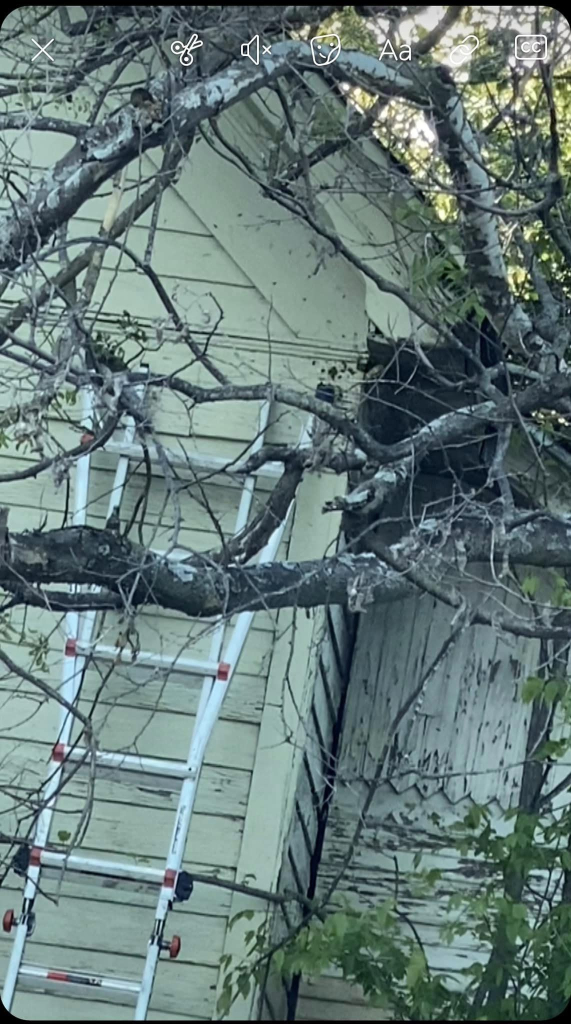
The department says it arrived to a home where they were met with what appeared to be millions of aggressive bees.
Grandview, TX (WBAP/KLIF) – The Grandview Fire Department responded to a bee attach in progress Thursday. In a Facebook post, the department decribed what it said was a chaotic scene as crews arrived to what “appeared to be millions very aggressive bees.”

The post says that there were two patients actively being attacked by swarms of bees and two people trapped inside the house with bees and unable to escape due to more bees.
Four firefighters suffered multiple bee stings, with no adverse reactions. Foam was used to get the bees under control which allowed everyone to escape. A bee keeper to make ‘swarmed’ in to evict the occupants from their hive from behind the walls of the house. AMR and Air Evac each transported one patient to a hospital for treatment.
The department warns everyone that it’s the time of year for bees, saying, “BEE aware and stay safe!”
Bees, wasps, and hornets are most abundant in the warmer months.
The US Agriculture Department says that honey bees nest are found in a wide variety of locations, such as pipes, holes, animal burrows or even in cavities within saguaro cacti or trees. Be alert. Bees living in an established colony will make a “beeline” for the entrance – flying in and out of an opening in a very regular pattern. Listen for buzzing sounds. Be especially alert when climbing, because honey bees often nest under rocks or within rock crevices. Don’t put your hands where you can’t see them.

Tips for Bee Safety from USAG
If you find a colony of bees, leave them alone and keep others away. Do not shoot, throw rocks at, try to burn or otherwise disturb the bees. Do not attempt to control them with aerosol sprays. If the colony is near a trail or near areas frequently used by humans, notify your local Forest Service, Game and Fish Department or Parks and Recreation Department. Honey bee colonies vary in behavior over time, especially with changes in age and season. You may pass the same colony for weeks, and then one day provoke them unexpectedly. Don’t EVER disturb or tease bees, and do not try to remove bees yourself.
Wear appropriate clothing. When hiking in the wilderness, wear light-colored clothing. Honeybees may be aggravated by textures and colors that resemble the characteristics of their natural predators (such as bears and skunks). When they defend their nests, Honey bees will target dark, leathery, or furry objects and will attack the most sensitive areas including the eyes, ears, and nose.
Avoid wearing scents of any sort when hiking or working outside. Honey bees communicate with one another using pheromones (scents) and are quite sensitive to odors. Avoid strongly scented shampoo, soaps, and perfumes. Citrus odors are also known to aggravate honeybees.
Be particularly careful when using any machinery that produces sound vibrations or loud noises. Bees are alarmed by the vibration and/or loud noises produced by equipment such as chain saws, weed eaters, lawn mowers, tractors or electric generators. Again, check your environment before you begin operating noisy equipment.
If you find a colony of bees, leave them alone and keep others away. Do not shoot, throw rocks at, try to burn or otherwise disturb the bees. Do not attempt to control them with aerosol sprays. If the colony is near a trail or near areas frequently used by humans, notify your local Forest Service, Game and Fish Department or Parks and Recreation Department. Honey bee colonies vary in behavior over time, especially with changes in age and season. You may pass the same colony for weeks, and then one day provoke them unexpectedly. Don’t EVER disturb or tease bees, and do not try to remove bees yourself.
Wear appropriate clothing. When hiking in the wilderness, wear light-colored clothing. Honeybees may be aggravated by textures and colors that resemble the characteristics of their natural predators (such as bears and skunks). When they defend their nests, Honey bees will target dark, leathery, or furry objects and will attack the most sensitive areas including the eyes, ears, and nose.
Avoid wearing scents of any sort when hiking or working outside. Honey bees communicate with one another using pheromones (scents) and are quite sensitive to odors. Avoid strongly scented shampoo, soaps, and perfumes. Citrus odors are also known to aggravate honeybees.
Be particularly careful when using any machinery that produces sound vibrations or loud noises. Bees are alarmed by the vibration and/or loud noises produced by equipment such as chain saws, weed eaters, lawn mowers, tractors or electric generators. Again, check your environment before you begin operating noisy equipment




